A reader writes:
A commenter on Foghorn’s $500 1000 yd rifle linked to a rifleman’s journal post, which in turn linked to a couple sight manufacturers. I’ve seen giant, weird-looking sights on competition rifles before, but don’t konw how they work. They’re unmagnified, no? Anyway, “Dear Foghorn, tell me bout these neat sights!”
In my opinion, if something looks goofy or ugly on a gun then there are only two reasons that the shooter hasn’t realized his faux pas and removed it: either it was ridiculously cheap (like Tapco stuff) or it works really, really well. Competition iron sights are most definitely in the latter category. Here’s how they work.
Iron sights are the simplest form of sighting device, and also the hardest to use. Because of the difficulty associated with their use they’re the chosen sighting system for serious competitions around the world, including the National Matches here in the United States. That difficulty arises from the fact that the sights are unmagnified, which means that not only does the target become smaller at increased distance but the front sight (if a “blade” type as seen below) may also become larger and harder to put on target.
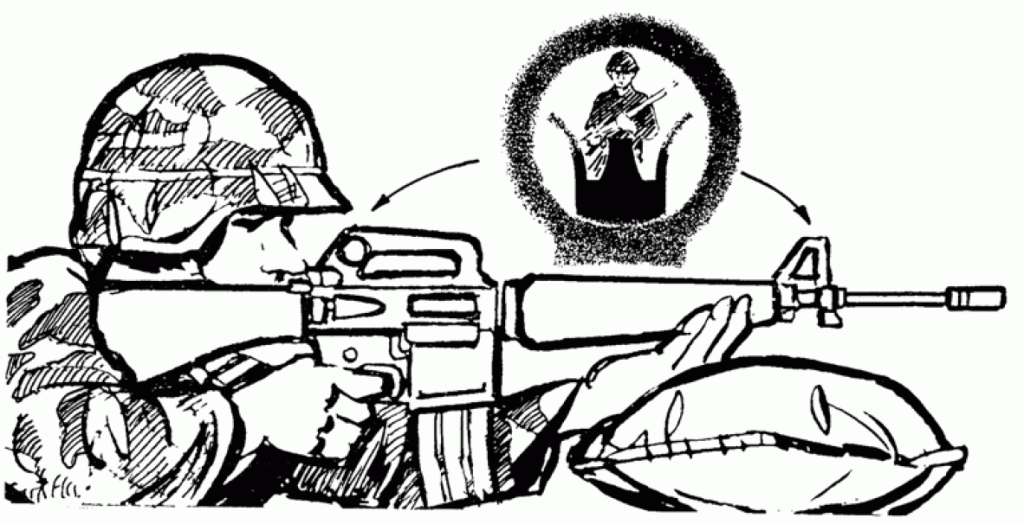 The standard issue iron sights for the M-16 family of rifles is the aperture iron sight, with a round hole (“aperture”) at the back which the shooter looks through, and a “blade” or “post” front sight which the shooter aligns with the target. When the tip of the blade is in the exact center of the circle, the sights are aligned. This aiming system is used in the “Service Rifle” divisions of shooting competitions, where the rifles cannot be altered from their “as-issued to the U.S. Government” configuration.
The standard issue iron sights for the M-16 family of rifles is the aperture iron sight, with a round hole (“aperture”) at the back which the shooter looks through, and a “blade” or “post” front sight which the shooter aligns with the target. When the tip of the blade is in the exact center of the circle, the sights are aligned. This aiming system is used in the “Service Rifle” divisions of shooting competitions, where the rifles cannot be altered from their “as-issued to the U.S. Government” configuration.
Why does the post have to be centered inside the ring, as opposed to at the bottom or somewhere else? The reason is that the human eye naturally wants to center items within a circle and can detect when something is even a little off. This is the reason that the hair curler sight posted recently (allegedly) works so well.
While aperture and posts sights are all well and good for the Service Rifle divisions, those craving increased accuracy (and increased spending) in the Match Rifle divisions typically opt for what’s called a Diopter and Globe sighting system. This system takes the “centering circles” principle to its logical conclusion, and is the system specifically asked about by today’s inquiring mind.
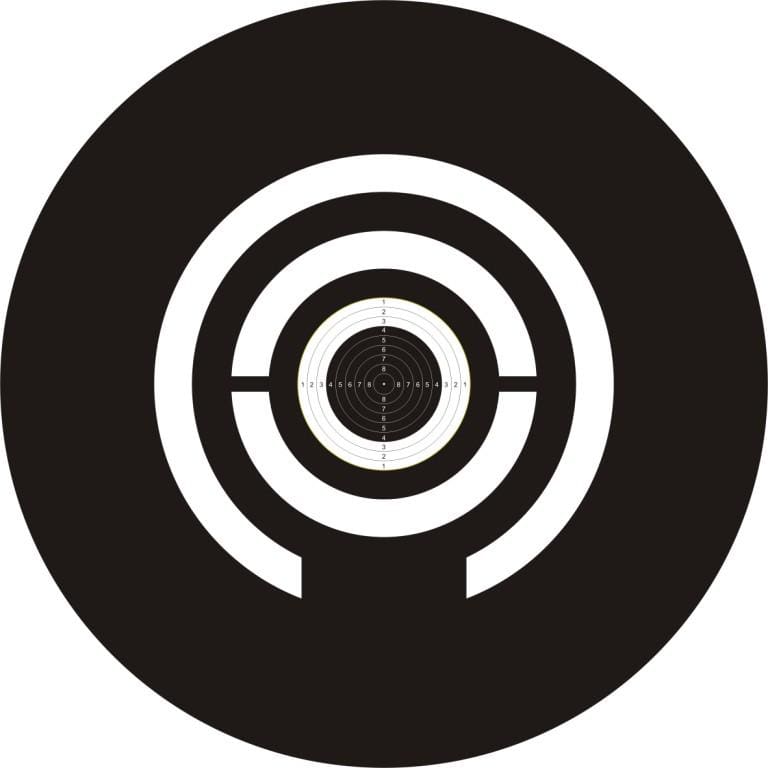 This is the sight picture from a rifle using a diopter and globe sight (image thanks to Francis Flinch). Taking full advantage of the eye’s OCD-like need to center things, this type of sight puts a circle in a circle in a circle in a circle. There are two main parts to this type of sight, a diopter and a globe.
This is the sight picture from a rifle using a diopter and globe sight (image thanks to Francis Flinch). Taking full advantage of the eye’s OCD-like need to center things, this type of sight puts a circle in a circle in a circle in a circle. There are two main parts to this type of sight, a diopter and a globe.
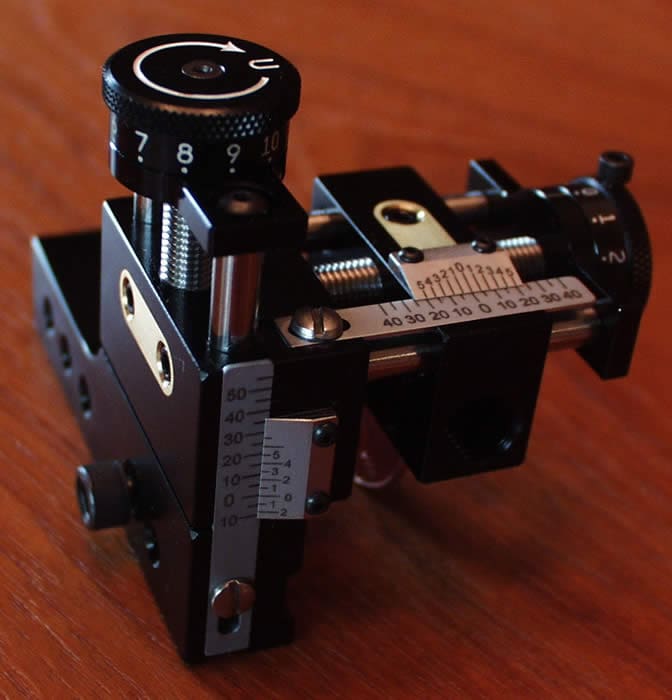 This is the specific diopter sight that our inquisitive reader was talking about. Not all sights are this complicated and over-engineered, but this is a great example of a finely built diopter rear sight. This is a housing that gets bolted onto the rear of the rifle, replacing the rear sight. An aperture, such as the one pictured at the top of this story on the left side, is inserted into the open hole seen at the back.
This is the specific diopter sight that our inquisitive reader was talking about. Not all sights are this complicated and over-engineered, but this is a great example of a finely built diopter rear sight. This is a housing that gets bolted onto the rear of the rifle, replacing the rear sight. An aperture, such as the one pictured at the top of this story on the left side, is inserted into the open hole seen at the back.
Apertures can sometimes contain corrective lenses which focus the light and sharpen the sight picture, but are considered illegal in some competitions. The shooter views the front sight through the aperture, creating the thick black ring on the outside of the diopter sight picture above.
The rear sight is typically adjustable in extremely fine increments and highly accurate. That accuracy is the primary driver in the price of this hunk of metal (the pictured thinger costs $670). Apertures can also be exchanged for smaller or larger versions depending on the shooter’s preference (and budget).
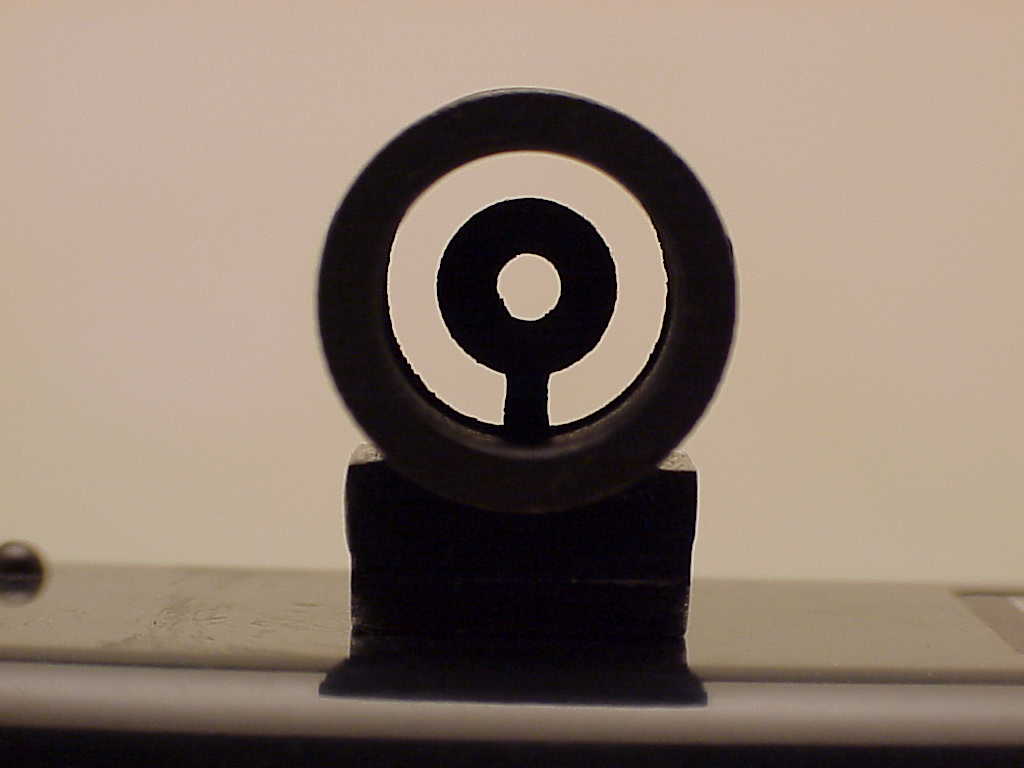 The globe sight is simply a fixed metallic sight at the front of the rifle. Depending on the shooting being done, the piece of metal inside the front sight hood can be exchanged for a number of different silhouettes, each with their own distinct benefits and drawbacks.
The globe sight is simply a fixed metallic sight at the front of the rifle. Depending on the shooting being done, the piece of metal inside the front sight hood can be exchanged for a number of different silhouettes, each with their own distinct benefits and drawbacks.
 A, for example, provides a reference for centering the circle in terms of elevation, B provides a windage reference, and so on (picture thanks to Wikipedia). Changing out the silhouette changes the zero, so each time the rifle will need to be sighted in again. The “A” silhouette seems to be the most popular, providing the maximum number of circles, two points of contact with the sight hood for increased reliability, and easy elevation references.
A, for example, provides a reference for centering the circle in terms of elevation, B provides a windage reference, and so on (picture thanks to Wikipedia). Changing out the silhouette changes the zero, so each time the rifle will need to be sighted in again. The “A” silhouette seems to be the most popular, providing the maximum number of circles, two points of contact with the sight hood for increased reliability, and easy elevation references.
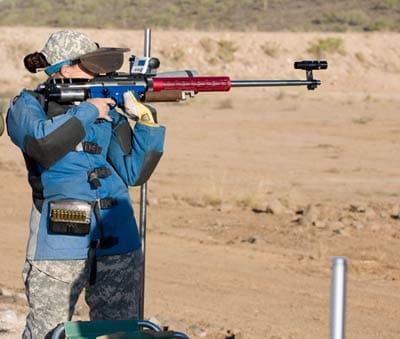
Diopter and globe sights are universally recognized as the “top of the line” when it comes to iron sights. No other sighting system is as easy to use and completely adjustable to the shooter’s preference. These sights are used by the best in the business, like SPC Sherri Gallagher (pictured) at the 2009 Creedmoor Cup Matches. When you absolutely have to get that round in the X ring, accept no substitutes.
And that, my friends, is the extent of my knowledge on match sights. If you have any questions ask away, I’m sure our resident competition shooters will be crawling out of the woodwork shortly to answer them.
If you have a topic you want to see covered in a future “Ask Foghorn” segment, email [email protected].

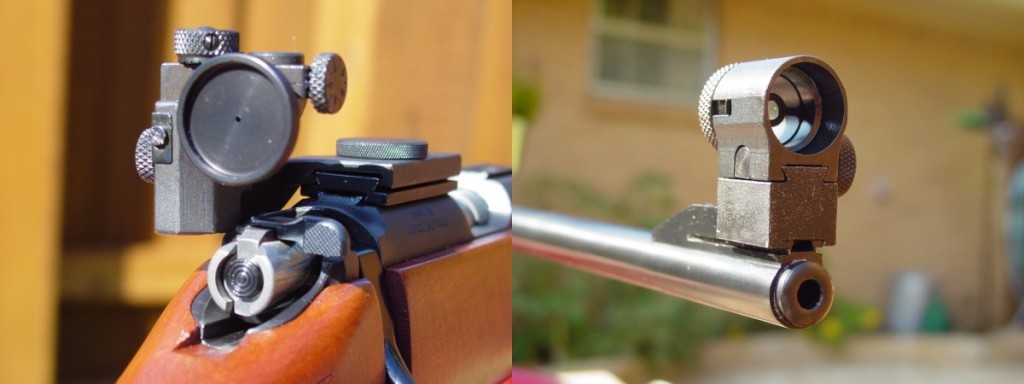



I recently saw on TV (can’t remember if it was on Outdoor or Sportsman Channel) that there is an engineer who created a lens for the diopter sight that allowed the front sight and the target to be in focus. I know he worked for the Government and he was a competition shooter, but I can’t remember his name. Anyone else see that story or know if he manufactured his lens for consumer use?
Oh, and thanks again, Foghorn.
I think you are referring to the micro sight. And yes they are on the market now..
Yes, very good article, as usual. Reminds me my youth in biathlon (we had similar sights). Plus it helps me to understand your terminology better.
Just wanted to comment that this was a great article, very informative.
Great work.
Nice item, thanks.
The lady pictured above, Sherri Jo Gallagher, is one of the top shooters in the world. I saw her turn in a historic performance at Camp Perry last year. Her Mom Nancy is the other woman in history to win the National High Power Championship.
I can’t believe more people haven’t commented on this article after all this time. True long distance shooting is done with globes. I use phoenix precision out of MN on my .223 white oak match uppers. I’ve met Gallagher who mostly shoots a Alias type comp rifle made by Mcmillian in .260 rem with a 30″ barrel, and other white oak shooters such as Carl Bernosky and Sagen Maddalena more than once at different competitions, some amazing long range match shooters out there. Nightforce and Leupold ain’t got nothing on true sights.
Thanks, Great Article….Was wondering what those fancy sights are called.
Keep in mind that the tiny apertures used with diopter rear sights don’t allow much light to get through to the eye. Your view through the little aperture will be noticeably dim. For round bullseye targets in sharp contrast on white paper, they work well, but you might have a hard time making out the shape of a silhouette target, or finding the top of a front sight post on a squirrel on a tree branch.
Comments are closed.